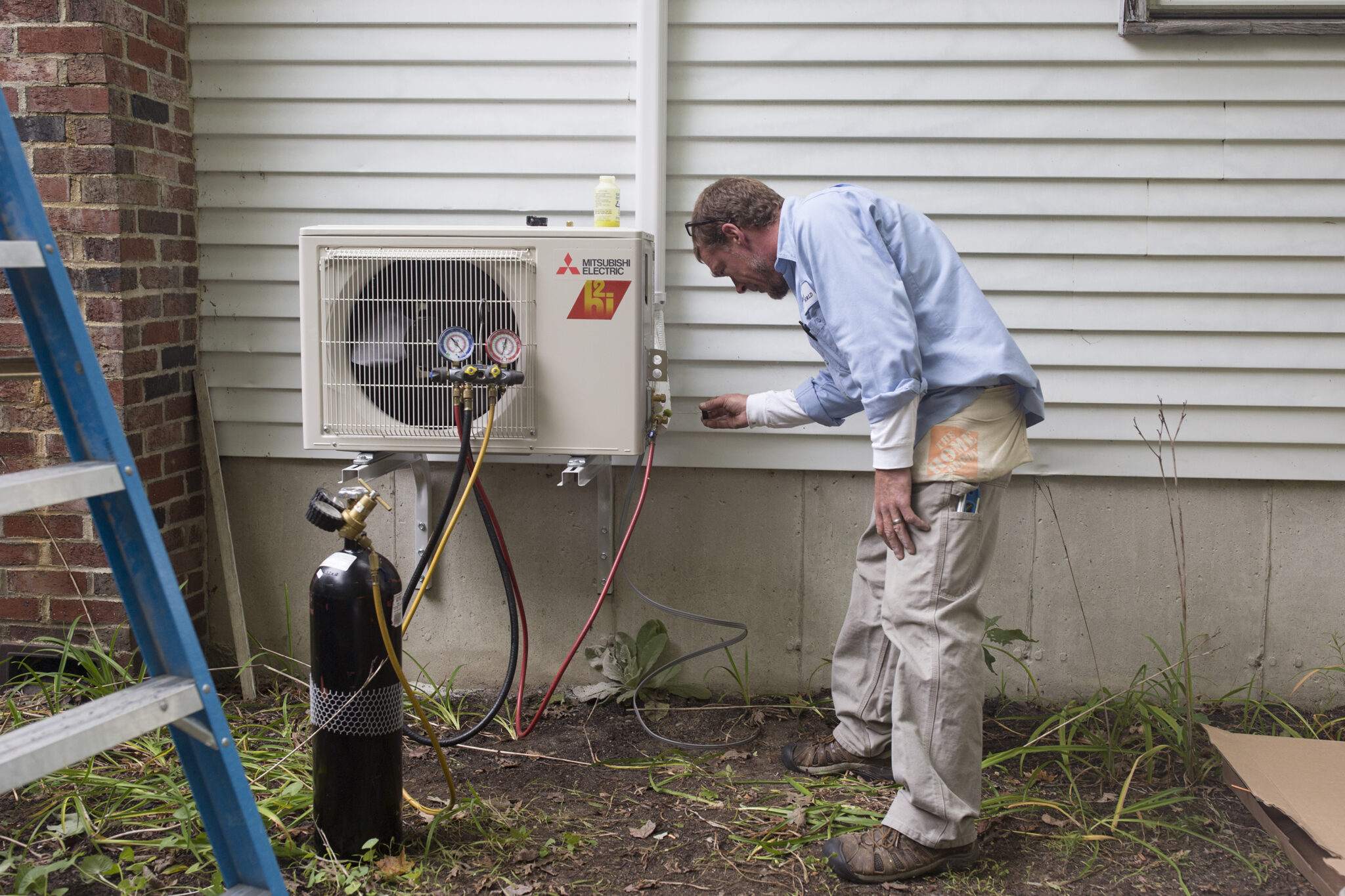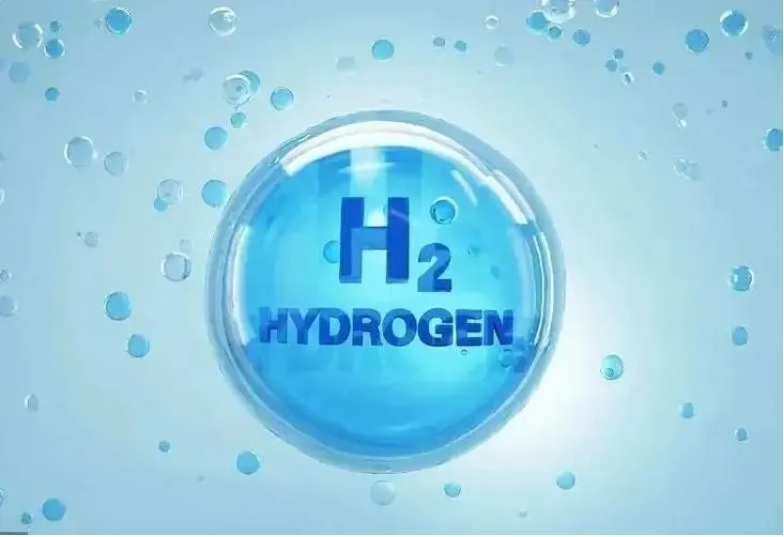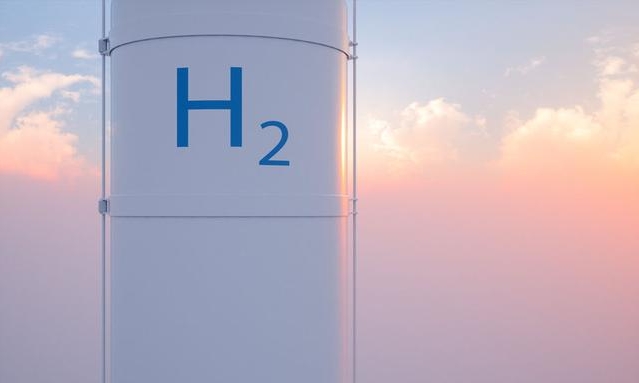
Using heat pumps powered by renewable energy to heat residential and commercial spaces would be a more effective use of limited clean energy resources, the report, from Gas Transition Allies, a coalition of clean energy advocacy organizations in the Bay State, concluded.
“If you were to use green hydrogen for heating, you would be using roughly three and a half times as much electricity as if you were providing the same amount of heat to buildings with heat pumps,” said Gordon Richardson, a technology and business consultant and co-author of the report.
Hydrogen, a clean fuel that does not release carbon dioxide when burned, is produced by splitting water into hydrogen and oxygen, an energy-intensive process. If the electricity used for this process comes from renewable energy sources such as wind or solar, the hydrogen it produces is considered “green.”
If gas utilities in Massachusetts replace 20 percent of the volume of methane, the primary component of natural gas, with green hydrogen, they would need 3.9 gigawatts of renewable energy capacity to produce the hydrogen, according to the report. That is approximately 20 percent more clean energy than the state’s planned buildout of 3.2 gigawatts of offshore wind power capacity by 2030.
The climate benefit of a transition to a green hydrogen blend of fuel would be negligible as greenhouse gas emissions would decrease by just 6-7 percent, the report found.
If buildings relied on heat pumps for heat instead of burning a blend of methane and green hydrogen in a furnace or boiler, they would need 3.6 times less renewable energy, according to the report. The significant disparity in renewable energy requirements between the two heating systems is due to a fundamental difference between how furnaces and heat pumps provide heat.
For every unit of energy input in the form of fuel—whether natural gas or a blend of hydrogen and methane—furnaces or boilers can theoretically produce up to one unit of energy in the form of heat.
Unlike conventional heating systems which burn fuel to generate heat, heat pumps pull heat from outside into a building, like an air conditioner run in reverse. Even on cold winter days there is still sufficient heat in outdoor air that can be drawn into a building through a heat pump’s series of fans, pumps and compressors.
Because heat pumps simply move heat from one location to another, their efficiency is far greater than conventional heating systems, allowing them to transfer upwards of three times the energy, in the form of heat, than the electricity that they consume.
The report doesn’t compare the cost of green hydrogen to heat pumps. Ben Butterworth, a director with the Acadia Center, a clean energy advocacy organization based in Rockport, Maine, said costs associated with the additional renewable energy needed for green hydrogen would be tremendous.
“It’s expensive to build this renewable energy capacity at scale already, and if we’re using or requiring 3.6 times as much electricity, that really underscores the cost difference between the two,” Butterworth said.
Butterworth, who reviewed an early draft of the Gas Transition Allies report, said he sees building electrification paired with energy efficiency measures as being the “lynchpin strategy” for decarbonizing buildings in Massachusetts.
“We know this, and we have to focus on that and not be distracted by putting green hydrogen into the gas distribution system because it’s just an inferior option all around,” he said.
National Grid, one of two large gas utilities operating in Massachusetts, pledged in 2022 to transition to 100 percent fossil free gas—including up to 20 percent green hydrogen as well as “renewable natural gas,” biogas sourced from landfills, dairies or food waste —by 2050.
Christine Milligan, a spokeswoman for National Grid, said electrification will play a “massive role” in the clean energy transition but added that green hydrogen is “being demonstrated around the world as a renewable carrier and a means for long-term storage of renewable power.”
By “carrier” Milligan is referring to hydrogen’s ability to effectively store the renewable electricity that goes into producing green hydrogen until the gas is needed as fuel.
Milligan added that “with billions of dollars in federal support for clean hydrogen coming through the IRA [Inflation Reduction Act] and IIJA [Infrastructure Investment and Jobs Act], green hydrogen is going to get much more affordable and more abundant in coming decades. We feel it can play a very important role in helping meet our decarbonization goals and has a range of use cases.”
Clean energy advocates agree that green hydrogen may make sense for hard to electrify sectors of the economy like heavy industry, maritime transport and aviation, but maintain that it has no place in gas pipelines that feed into residential and commercial buildings.
William Hinkle, a spokesman for Eversource, the other large gas utility operating in the state, said his company has not set any targets for hydrogen use.
“In order to achieve the Commonwealth’s leading decarbonization goals, customer choice is essential and all potential cost-effective options must be evaluated,” Hinkle said. “We at Eversource have also never suggested any single emerging technology as the only solution, but rather that all potential innovative solutions must be considered as we work together toward a clean energy future that benefits every customer.”
The current report comes as state regulators grapple with how Massachusetts should best move forward on energy and climate policy as a new governor, who has previously pledged to make heat pumps a key part of the state’s decarbonization plans, takes office.
In June 2020, then-state Attorney General Maura Healey, who became governor in January, filed a petition urging the Massachusetts Department of Public Utilities to open an investigation into the future of the natural gas industry in Massachusetts as the state “transitions away from fossil fuels and toward a clean renewable energy future.”
In March 2022, a DPU report, which was commissioned by the state’s gas utilities, proposed a range of options for future energy needs including green hydrogen and hybrid heating systems that include heat pumps and a continued reliance on gas.
The administration of then-Gov. Charlie Baker, a Republican, “let the utilities take the first step,” said Caitlin Peale Sloan, an attorney with the Conservation Law Foundation, an environmental advocacy organization based in Boston. “They engaged their consultants, they did what was purported to be a public engagement process, and then they wrote what they wanted to say.”
Healey slammed the DPU report in comments submitted to the department in June 2022, stating that “the utilities propose to introduce what they call ‘clean’ alternatives, such as hydrogen and other methane-based gases. The AG’s Office urges the DPU to reject this plan because it is too risky and there are too many unknowns around costs, feasibility, and whether this approach would actually reduce greenhouse gas emissions.”
In September, researchers at the University of Massachusetts Lowell published a peer-reviewed study favoring a 20 percent blend of hydrogen into natural gas systems for the heating of residential and commercial buildings. Two months later, the Boston Globe revealed that the study was funded by natural gas industry interests and that National Grid and a business lobbyist with ties to the industry were allowed to “review and suggest changes” before the study was released.
Gov. Healey has yet to make a determination on future energy policy for the state. Any determination on the future of gas will come from the commissioners of the state’s Department of Public Utilities. One of the three DPU commissioner positions remain vacant, a seat that will likely have to be filled before a determination can be made.
Commissioners are appointed by the Secretary of the Executive Office of Energy and Environmental Affairs with the Governor’s approval. The governor’s office and the energy and environmental affairs office declined requests for comment by Inside Climate News.
“I remain hopeful that the Healey administration will sort of right the ship and will take the future of gas utility planning back and not let the gas utilities run roughshod anymore,” Peale Sloan said.







